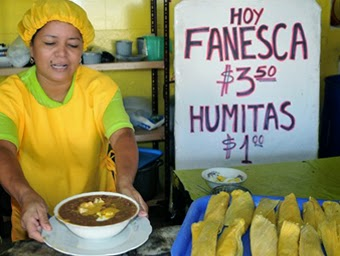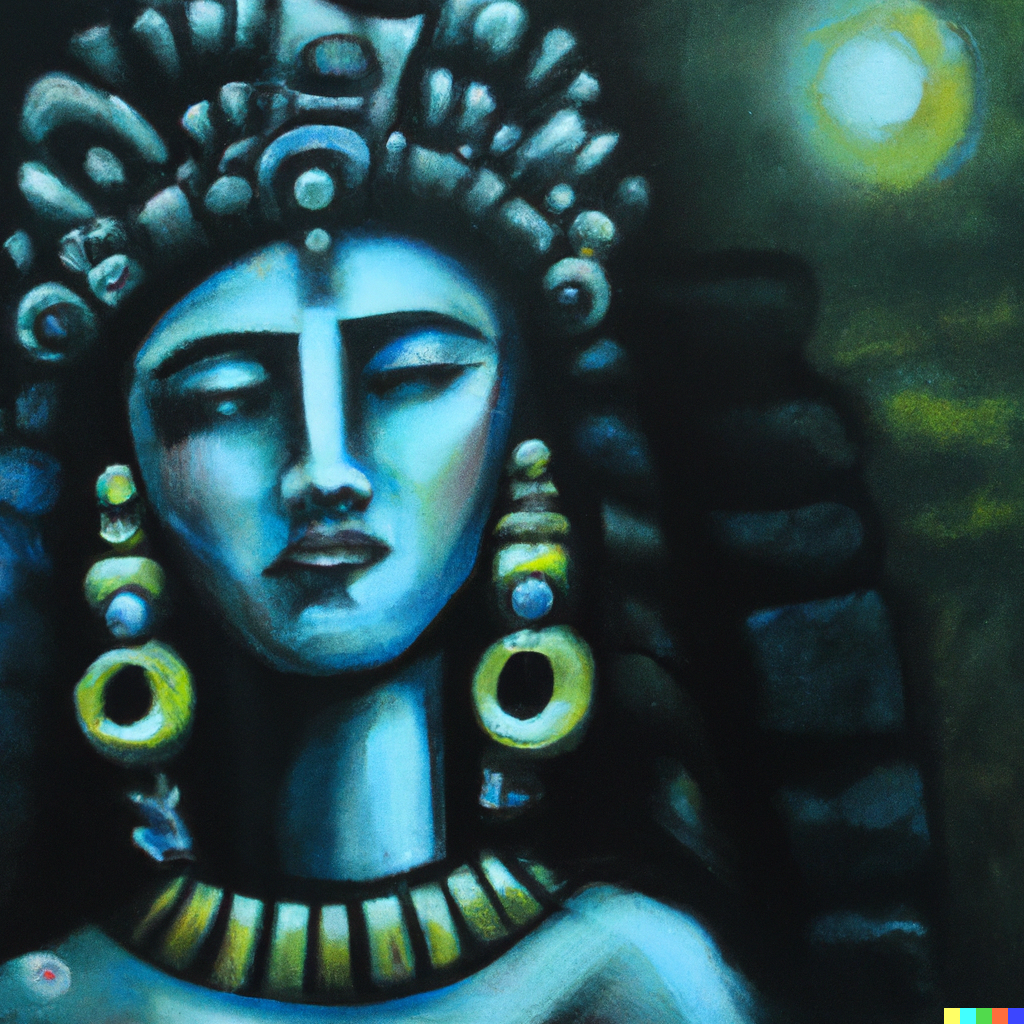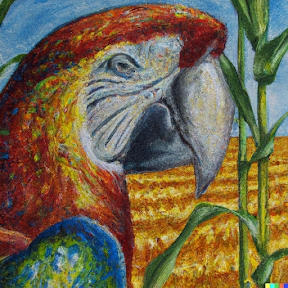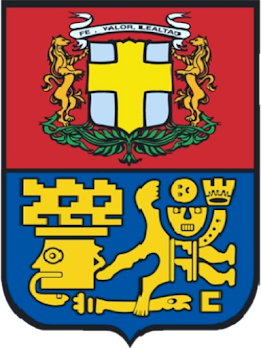La Historia que no nos contaron
ARTISTAS POR CUBA 2025
Fanesca today, Fanesca tomorrow.
Since the European contact to our continent, called by our ancestors as Pacha Mama or Abya Yala, varius processes of cultural and biological miscegenation began in which two cultures and two ways of seeing the world merge; one formed by those who They came from the Old Continent, in search of fame, glory and easy riches, the other we, the natives of the New Continent, owners of a treasure more valuable than gold and precious stones, the true Gold, sought after by so many adventurers, which in reality was our position in the Middle of the World where the sun fell straight on Mother Earth making her generous and fertile.
In general, the elaboration of the fanesca is a family task, due to the complexity of the dish, everyone participates, either shelling and peeling the grains, others draining the fish or preparing the traditional sweets, it is during this time of Lent, especially on Good Friday. in which the church prohibits meat and other earthly temptations, times of religious reflection, until not long ago there was the custom of giving family and friends a good plate of fanesca, today due to the difficulty of its preparation and its cost many people they prefer to go out to taste the dish in specialized restaurants or popular fairs days before, during and after Holy Week.
Ecuador land of magical flavors, smells and textures, who knows you cannot stop loving you.
Original Post: https://terraza-ilalo.blogspot.com/2015/03/hoy-fanescamanana-tambien.html
Written by: Juan Acosta Salazar.
 Centro Cultural que Investiga, Rescata, Promociona y Difunde el Patrimonio Cultural del Ecuador, desde el volcán Ilaló, un referente de la presencia del ser humano en territorio desde hace más de 10.000 mil años.
Centro Cultural que Investiga, Rescata, Promociona y Difunde el Patrimonio Cultural del Ecuador, desde el volcán Ilaló, un referente de la presencia del ser humano en territorio desde hace más de 10.000 mil años.
(Video) Plantas Maestras; Introducción a un conocimiento milenario.
Fuentes:
1993 Plantas de los dioses. Orígenes del uso de los alucinógenos.
Principales plantas sagradas de Sudamérica. Artículo de A.Llamazares y C.Martinez. Incluido en: El Lenguaje de los Dioses: Arte, Chamanismo y Cosmovisión Indígena en Sudamérica.
Therapeutic Qualities of Clay-work in Art Therapy and Psychotherapy Art Therapy: Journal of the American Art Therapy Association, 23(2) pp. 66-72 © AATA, Inc. 2006.
.CHAMANISMO, ENTEÓGENOS Y ARTE CONTEMPORÁNEO.
Jo-Ann Finkelstein Ph.D. Unexpected Ways Clay Is Therapeutic: Transforming yourself one squish at a time.https://www.psychologytoday.com/us/blog/demystifying-talk-therapy/202003/7-unexpected-ways-clay-is-therapeutic
 Centro Cultural que Investiga, Rescata, Promociona y Difunde el Patrimonio Cultural del Ecuador, desde el volcán Ilaló, un referente de la presencia del ser humano en territorio desde hace más de 10.000 mil años.
Centro Cultural que Investiga, Rescata, Promociona y Difunde el Patrimonio Cultural del Ecuador, desde el volcán Ilaló, un referente de la presencia del ser humano en territorio desde hace más de 10.000 mil años.
Mushuk Nina 2023
MULETERS
MULETERS
Indomitable horsemen from the Andean peaks, the muleteers from the Pedro Moncayo or Tabacundo canton area, are skilful centaurs who ride through the steep páramos of Fuya Fuya towards the four cardinal points, wading through the wild surroundings of the mysterious Mojanda lagoons.
FUYA FUYA AND THE WARMI COCHA LAGOON.
Steel-tempered men with a firm hand direct from their horses the large herds of cattle that they herd from commune to commune, from farm to farm towards a common destination of fairs and markets, avoiding unfathomable abysses and treacherous quagmires or swamps, spending days and weeks by hidden chaquiñanes where the gaze is lost in the intense gold of the endless grasslands.
THE CHAMIZA
At dusk they seek shelter in caves and arbors, leave their animals safely and light the bonfires where they prepare their food and their hot waters made from field herbs sweetened with panela, baptized with a generous portion of cigar or brandy to ward off the cold and the As a result, they slowly fall asleep between stories and songs, remembering the dragging of chamizas, the popular bulls and the taming of colts in the past festivals.
DRAG OF WOOD FOR THE CHAMIZA OF THE FESTIVAL
Early the next day they continue their journey, checking their horses, checking their ironwork, preparing their saddles, stirrups and bridles, then they set off, in the midst of the persistent fog, the constant drizzle, the icy hail and that biting wind that prove their courage, they do not know fear, every day they are fewer, currently young people prefer other occupations and modernity no longer requests their hard-working services.
| RECORRIENDO LOS PARAMOS DE MOJANDA CON UN VIEJO COMUNERO Y ARRIERO DE TOCACHI |
WALKING THE PARAMOS OF MOJANDA WITH AN OLD COMMUNITY AND ARRIERO FROM TOCACHI
A heartfelt tribute goes to them, to those riders with calloused hands and noble hearts who, between legends and tales, taught me the secrets of the mountain and to overcome the challenges that the road imposes on us, but above all, they taught me to love this land and its ancient traditions. and customs, where above all things the word still counts.
Original post:
https://terraza-ilalo.blogspot.com/2017/06/arrieros.html
Autor: Juan Acosta Salazar.
 Centro Cultural que Investiga, Rescata, Promociona y Difunde el Patrimonio Cultural del Ecuador, desde el volcán Ilaló, un referente de la presencia del ser humano en territorio desde hace más de 10.000 mil años.
Centro Cultural que Investiga, Rescata, Promociona y Difunde el Patrimonio Cultural del Ecuador, desde el volcán Ilaló, un referente de la presencia del ser humano en territorio desde hace más de 10.000 mil años.
MAMA QUILLA OR MOTHER MOON.
The Moon has been the timeless and universal symbol that has represented women in the beliefs of all civilizations on the planet. For primitive man, the Moon was the natural symbol of the feminine essence, in contrast to the masculine essence considered to be of a solar nature. The intimate connection between many female fertility rites and the Moon is manifested by its association with a symbology referring to the female reproductive organs, gestation and childbirth.
In the coastal and Andean civilizations of pre-Hispanic America, the cult of the Moon was widely generalized, although it is clear that not in all cases its ceremonial rites were registered or symbolized and in many others they adopted confused forms and manifestations.
In the Inca worldview, mother Moon (Mama Quilla), sister and wife of father Sun (Taita Inti) was the guardian and protector of all manifestations and feminine aspects of the Quechua universe. The changes that the star manifested during its orbital cycle led to a lunar calendar that governed various aspects of the Andean universe and worked in parallel to the solar calendar. In specific terms, the Moon and its phases indicated the periods of great fertility of the earth (Mama Pacha) and exerted a direct influence on the fertility of women.
The cult of Mama Quilla was conserved, participated in and celebrated exclusively by women. The priestesses of the Moon belonged to the Cusco female elite, were very numerous and had a main temple in Qorikancha. These priestesses wore long gray robes and cloaks of the same shade, covered their heads with a thick white wool cap, and wore silver earrings that made a metallic sound that warned men of their presence, who were forbidden to look at them.
The priestesses of the moon were known as great healers and very wise women, they knew the secrets of the plants and were very busy sorcerers, their oracles generally announced disasters and calamities, that is why the moon was revered with great fear, unlike the Sun. who was adored with joy.
In the tenth month of the Inca calendar, Coya raymi (September), at the beginning of the rainy season – spring equinox – during the first night of the new Moon, the Quillamama raymi took place, a great celebration in honor of the Moon , a special festival for women.
The party began inside the Qorikancha temple, at the altar of the Moon, then continued with a silent nocturnal walk towards Saqsaywaman; there in the temple of Mama quilla, torches were lit that illuminated the night with sparkles to the sky reflected by silver fountains, then they made vibrate thin sheets of silver that emitted a sound that broke the silence to attract the attention of the moon. Essences and perfumes were burned, the water was watered with aromatic oils and they threw combs, mirrors, needles, women's ornaments and miniaturized silver filigree into the sky, reflected in the water, they also burned white llama wool and fine women's clothing in bonfires.
In the current province of Anta in the department of Cuzco - Peru, located at 3,600 meters above sea level. is the sanctuary of Quillarumiyoc (the stone of the moon) which is considered the only ceremonial archaeological center dedicated to women.
Quillarumiyoc occupies a huge terraced area built in the same style as Saqsayhuaman, Chincheros and the upper parts of Ollantaytambo (ancient sacred sites located in Cuzco). The Huaca or stone replica of an Apu (sacred mountain) is a symbol carved on one of the largest rocks and represents an ancient temple dedicated to the divinity of the essence and the expression of the feminine principle.
Within the universal concept of lunar mythology, the connection with Quilla Mama is what gives the Quechua woman the secrets of magic, charm, beauty, the strength of the invisible, knowledge of cycles and feminine wisdom; it also reminds him of her instability and vulnerability. It is to her that the Andean women offered to ask for protection for girls, women in labor and newborn babies.
Original post:
https://terraza-ilalo.blogspot.com/2015/01/mama-quilla-o-madre-luna.html
 Centro Cultural que Investiga, Rescata, Promociona y Difunde el Patrimonio Cultural del Ecuador, desde el volcán Ilaló, un referente de la presencia del ser humano en territorio desde hace más de 10.000 mil años.
Centro Cultural que Investiga, Rescata, Promociona y Difunde el Patrimonio Cultural del Ecuador, desde el volcán Ilaló, un referente de la presencia del ser humano en territorio desde hace más de 10.000 mil años.
THE CAÑARIS, BETWEEN MYTH AND REALITY.
THE LEGEND OF THE MACAWS
This story was narrated to me by the Wise Elders, guardians of Memory in a distant mountain wasteland. According to an ancient legend transmitted generation after generation in which the Genesis of the Cañari People is described.
For a long time human beings forgot respect for Pacha Mama or Mother Earth, destroying nature and killing each other, theft, laziness, and lies had perverted their hearts. As punishment for that behavior, the Gods Tutelaries unleashed a great deluge, for many moons the waters swallowed everything, crops, animals, houses, most of the people drowned, except for two young men who had always respected the Earth and the Sacred Spirits of their Ancestors, They managed to survive in a remote cave in a mountain known today as Huaycañan, a mountain that magically rose as the level of the flood increased, after forty days the rain stopped, the two brothers with great difficulty tried to feed themselves with the few roots they could collect.
One day in the cave that served as their refuge, after wandering around they found exquisite fruits and corn chicha, after the surprise, they tried to find out who their benefactors were and hid to see what was happening, great was their amazement when contemplating the arrival of two large Macaws with the faces of women who brought food for them, they were present before the birds which in the act were transformed into two beautiful girls, who had been bewitched by a demon that perished in the flood, this He had put a curse on them transforming them into birds, but this was what saved them, since they flew to the top of the enchanted mountain.
The brothers fell in love with them and with the blessing of the Andean Gods they formed an extensive family that would give rise to the Cañari people, people of temper and warrior spirit who maintained a totemic cult of the macaw and the snake, settling and having as areas of influence in Ecuadorian territory what are currently the provinces of: Cañar, Azuay, El Oro and Morona Santiago.
At present there is a serious risk of the destruction of the Material and Intangible Cultural Heritage of this culture, due to the globalizing and alienating processes of the western model of society imposed since the colony, which does not respect or value the knowledge, beliefs, and traditions of the native Indian peoples.
70% of its population has lost the use of the kechwa language, imposing Spanish as a language, there are few communities that maintain the indigenous socio-cultural clothing and practices, it is urgent to work with grassroots organizations and Decentralized Autonomous Governments to start an Agenda of Rescue, Enhancement of Social Value, Safeguarding, Promotion and Dissemination of the Cultural and Natural Heritage of the Cañari People, since more than a myth they are a reality that gives shape and nuances to our Ecuadorian Multiethnic and Intercultural Identity.
 Centro Cultural que Investiga, Rescata, Promociona y Difunde el Patrimonio Cultural del Ecuador, desde el volcán Ilaló, un referente de la presencia del ser humano en territorio desde hace más de 10.000 mil años.
Centro Cultural que Investiga, Rescata, Promociona y Difunde el Patrimonio Cultural del Ecuador, desde el volcán Ilaló, un referente de la presencia del ser humano en territorio desde hace más de 10.000 mil años.
Trazos de Nuestra Identidad Comunicación y Música Alternativa
https://anchor.fm/terracosta-atelier/episodes/TRAZOS-DE-NUESTRA-IDENTIDAD--PROGRAMA-3-Nueva-Temporada-e1mnp59

